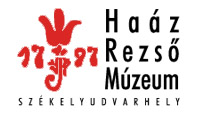Căbuz Andrea (szerk.): Pulzus III. Székelyudvarhely Művésztelep 2014. július 14 - 24. (Székelyudvarhely, 2014)
of Aleşd. His painting has several viewpoints, can be seen from several perspectives, is often conceive series, expressing a seemingly real visual world, and it is often “built" on elements and motifs that ar contradiction with the requirements of everyday logic. The messages of his works from the colony are t and are getting their final form during the physical process of painting. Zoltán Hosszú is a sculptor-teacher, who due to the art-friendly atmosphere and support of Sfc Gheorghe did not give up sculpture for good. His former style of edges and planes characteristic geometrical abstract was replaced by soft organic forms. A confirmation should be his walnut statue me in the yard of the Spanyár House, presenting pleasantly exciting, noble visual and aesthetical contents. Ilonka Kolumbán-Antal is our local painter from Odorheiu Secuiesc, coming after a long bre presenting a much more harsh and agressive world of colours. During the synthesis and reinterpretatior pre-studies she makes well-composed paintings with a specific atmosphere. The wildness and roughnes the Olt Valley from the Ciuc Basin is shaped into magically exciting and beautiful sceneries by her hands. József Kolumbán-Antal is from Zetea, following his studies at Timişoara, then at the College of Fine i from Bucharest. At the beginning, his means of expression was non-figurative, metal-charming, focusinc objects, but nowadays this was overtaken by a figurative expression, using polyester glass cement or sinq new materials. His "stepping figure” from the Pulse art colony is a kind of assemblage embedded into present art. The big size graphic works of Gabriella Lakatos from Odorheiu Secuiesc are pervaded by a loose p art atmosphere. The stereotype figures of the agressive commercial are evidently eye-catching. The she placed in pairs at right angles to each other are mirroring each other, outlining the necessity of a hea lifestyle. The work of Lakatos can be interpreted however as an anti-commercial of the consumers' soci which relies on the slogan "buy more, consume more". The works, the illustrations related to books of graphic artist Csaba Léstyán from Miercurea Ciuc evidence of the rare capability of catching the feeling of literary works. In his hands feeling is transformed i intelligible picture and vision. His graphic artist ego comes through the feelings, textures and nuances o paintings. Finishing her studies in 2010, Masa Paunovic exposes her works in many European countries, thus statues can be found in the parks, public squares and seaside promenades of Italy, Denmark, Germa Austria and Slovenia. Their visual language is characterized by the maximal utilization of the possibilities wit different materials. Her work made of walnut refers to the importance of human relations and of ft protection and permanent sustenance. Imre Berze from Odorheiu Secuiesc was consequent and tenacious in creating a specific vis language of his own. His early archaic surfaces are replaced by more modern forms delimited by surfa< which can be generated by cubic or cyclic equations. His present work is in fact a result of a game of volun and surfaces. Eastern and Central Europe lives an age of fine art camps. In each and every country that \ experienced a system change, within the last 25 years of art life - due to ideological, social, and economi changes - there has been disorder and uncertainty. Maybe the art camps will help to move this situatior transition into a good direction. The evaluation of the works which were created in the spirit of the presum or real challenges of the new possibilities and new systems of values is a task of the future, as the process is i overyet.
